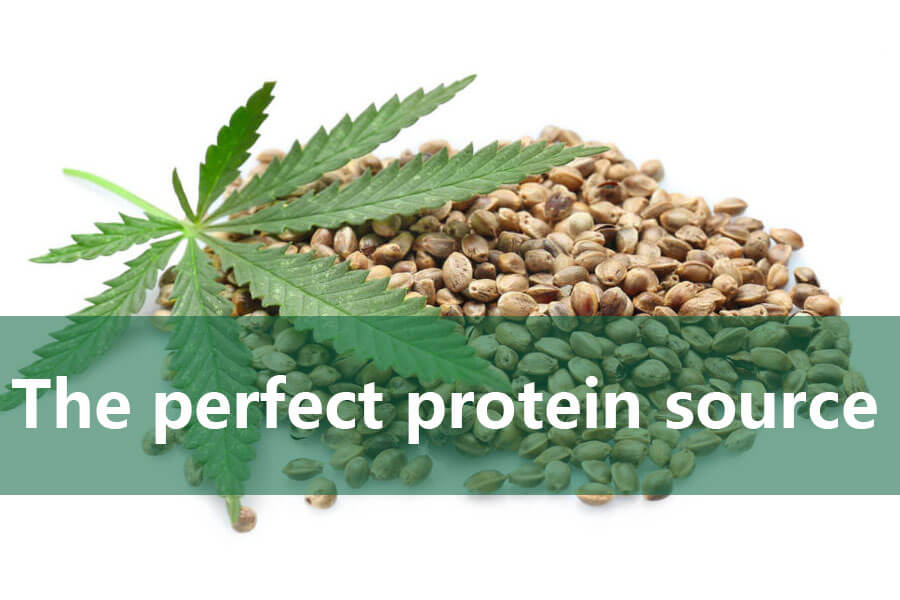As the global shift toward sustainable, nutrient-dense superfoods accelerates, organic hemp seed protein powder is emerging as the crown jewel of plant-based nutrition. With a projected 6.2% CAGR (2025–2030), this market is poised to exceed $4.2 billion by 2030, fueled by its unparalleled nutritional profile, eco-friendly credentials, and technological breakthroughs. Here’s why hemp protein is rewriting the rules of functional nutrition and sustainable agriculture.
1. Market Growth Drivers: Beyond the Protein Hype
A. Nutritional Superiority
- Complete Amino Acid Profile: Hemp protein contains all nine essential amino acids, including rare sulfur-rich methionine and cysteine, with a PDCAAS score of 0.61—outperforming pea (0.45) and soy (0.52).
- Digestibility Champion: Studies show 91–98% digestibility, rivaling animal proteins like whey, thanks to edestin and albumin structures that minimize bloating.
- Functional Synergy: Each 30g serving delivers 8g fiber and a 3:1 omega-6:3 ratio, addressing gut health, inflammation, and cardiovascular risks in one scoop.
B. Sustainability as a Growth Engine
- Carbon-Negative Crop: Hemp absorbs 8.8 tons of CO2 per acre—4x more than forests—and thrives with 90% less water than almonds.
- Zero-Waste Potential: Post-extraction hemp cake is repurposed into plant-based meat or biodegradable plastics, slashing production costs by 18%.
C. Regulatory and Tech Tailwinds
- Policy Support: China and the EU subsidize hemp farming as a “carbon sink crop,” while the FDA’s 2024 GRAS designation accelerates its use in infant formula and medical nutrition.
- Extraction Innovations: Cold-pressed microgrinding and enzymatic hydrolysis now achieve 70% protein purity while preserving bioactive compounds like gamma-linolenic acid (GLA).
2. Regional Hotspots: Where the Market Thrives
| Region | Key Growth Levers | 2030 Market Share |
|---|---|---|
| North America | Leader in premium protein bars and ready-to-drink shakes (38% global share). Brands like Manitoba Harvest leverage blockchain traceability for premium pricing. | 38% |
| Europe | Dominates organic certifications (EU Organic, Fair Trade), with Germany/France driving R&D for cholesterol-lowering functional foods. | 30% |
| Asia-Pacific | China’s Qiaopai Bio disrupts imports with 50% protein-content powders using cold-press tech; India targets diabetes management via Ayurvedic blends. | 22% (fastest-growing) |
3. Competitive Edge: Breaking Barriers
A. Flavor and Functionality Upgrades
- Deodorization Tech: Microbial fermentation eliminates hemp’s “earthy” taste, enabling vanilla/chocolate variants for baking and snacks.
- Nano-Encapsulation: Boosts bioavailability of antioxidant peptides for anti-aging serums and post-surgery recovery formulas.
B. Supply Chain Resilience
- Vertical Integration: Top players like Qiaopai Bio control organic farms and use blockchain for “seed-to-scoop” transparency.
- Direct-to-Consumer (DTC) Models: Subscription boxes (e.g., fitness or senior health bundles) achieve 65% repeat purchase rates.
4. Challenges and Solutions
A. Cost Pressures
- Hemp protein costs 1.8x more than pea protein due to 30% shelling waste. Innovations like thin-shell hemp cultivars and hemp shell-based bioplastics aim to cut costs.
B. Consumer Misconceptions
- 40% of consumers still confuse hemp with psychoactive cannabis. Campaigns like “Hemp Protein White Papers” and in-store tastings (e.g., Costco demo stations) are bridging this gap.
C. Standardization Gaps
- Inconsistent global testing protocols hinder imports. Industry leaders are pushing ISO to finalize purity/heavy metal standards by 2026.
5. Future Frontiers: Beyond the Shaker Bottle
- Cultured Meat Scaffolding: Hemp protein’s porous structure replaces costly collagen in 3D-printed lab-grown meat.
- Space Nutrition: NASA prioritizes hemp protein for Mars missions due to its radiation resistance and complete nutrient profile.
- AI-Driven Precision Nutrition: Custom blends target genetic profiles—imagine a “muscle-recovery” formula optimized for your DNA.
The Green Protein Revolution Is Here
Organic hemp seed protein powder isn’t just a supplement—it’s a **$4.2 billion movement** marrying nutrition, sustainability, and tech innovation. From gym enthusiasts to climate-conscious Gen Z, hemp protein is redefining what it means to eat for health and planetary survival.


